A Brief History of Civilization: Can DAO Break the Historical Cycle of Human Civilization Evolution?
Original Title: 《A brief history of decentralized cities and centralized states》
Original Author: Jon Hillis, Cabin
Compiled by: RebeccaWONG, conan xin, The SeeDAO
Throughout the long development of civilization, a series of new collaborative technologies that emerged occasionally changed everything. By enabling a small group of people to better collaborate and manage resources, these technologies redefined power structures and laid the foundation for a new era of civilization.
Humans are social animals—our development to this day relies on the continuous introduction of collaborative tools into complex organizational structures. As civilizations rise and fall, this guiding process follows a repetitive pattern of decentralization and centralization:
1. Collaborative and communication technologies rapidly integrate into the development of civilization and play a role.
2. These new collaborative technologies enable humans to form effective local decentralized governance structures (e.g., cities).
3. Ultimately, the decentralized governance federated networks are defeated by more efficient centralized sovereign structures.
4. Centralized sovereign structures eventually collapse under their own weight, restarting the entire cycle by creating a governance vacuum.
We can traverse various eras of human history along this storyline. When historians classify the overall process of Western civilization, they typically divide it into four periods:
1. Ancient Times (10,000 BC - 1,000 BC): Agriculture, Sumerians, Egyptians, etc.
2. Classical Era (1,000 BC - 500 AD): Greek city-states, Roman Empire, etc.
3. Medieval Period (500 AD - 1,500 AD): Knights, kings, castles, churches, etc.
4. Modern Era (1,500 AD - 2,000 AD): Renaissance, Enlightenment, industrialization, etc.
This Eurocentric classification clearly overlooks a vast amount of human experience and culture—it is merely a timeline focusing on how a specific region evolved in the course of human history. However, as a continuous story, it serves as a useful shorthand for thinking about how civilizations evolve. By comparing these periods, a pattern relevant to our current stage emerges:

The cycle of decentralized cities and centralized states
As with any attempt at psychohistory, do not take the understanding of this framework too literally. I am a historian who talks on paper, an amateur hobbyist who sketches rough diagrams and tells stories. But in the tradition of Carlota Perez, James Dale Davidson, Lewis Mumford, and David Hackett Fischer, I believe that telling the grand story of humanity's long development is valuable. I draw inspiration from each of their works.
Ancient Times: The First Cities and Sovereignty
Irrigation provided a means for large-scale cooperation.
Society originated in the moist river valleys, where people learned how to farm without drowning in floods. While before this, humans had gathered into small groups, tribes, and villages, the flooding river valleys required people to cooperate and develop, thus giving rise to cities:
"The construction of an 'irrigation network' requires a certain degree of social interaction, cooperation, and long-term planning, which are not needed or encouraged in the ancient self-sufficient village culture. It is in this context that large urban settlements became a practical possibility and a social necessity."
------ Lewis Mumford, "The City in History"
Not drowning is good, but it turned out that people inadvertently discovered something more valuable in the progress of civilization: the collaborative development of public goods.
Individuals rarely have clear cooperative motives, which can lead to the tragedy of the commons. Localized irrigation is a massive undertaking for any individual, but when a small group works together, they can share resources and manage collectively through a system of rules and norms.
In other words, this collaborative public pool irrigation gave rise to a bottom-up governance system (the original DAO). Such systems are very effective, still being adopted today, and often outperform top-down government plans in irrigation management.
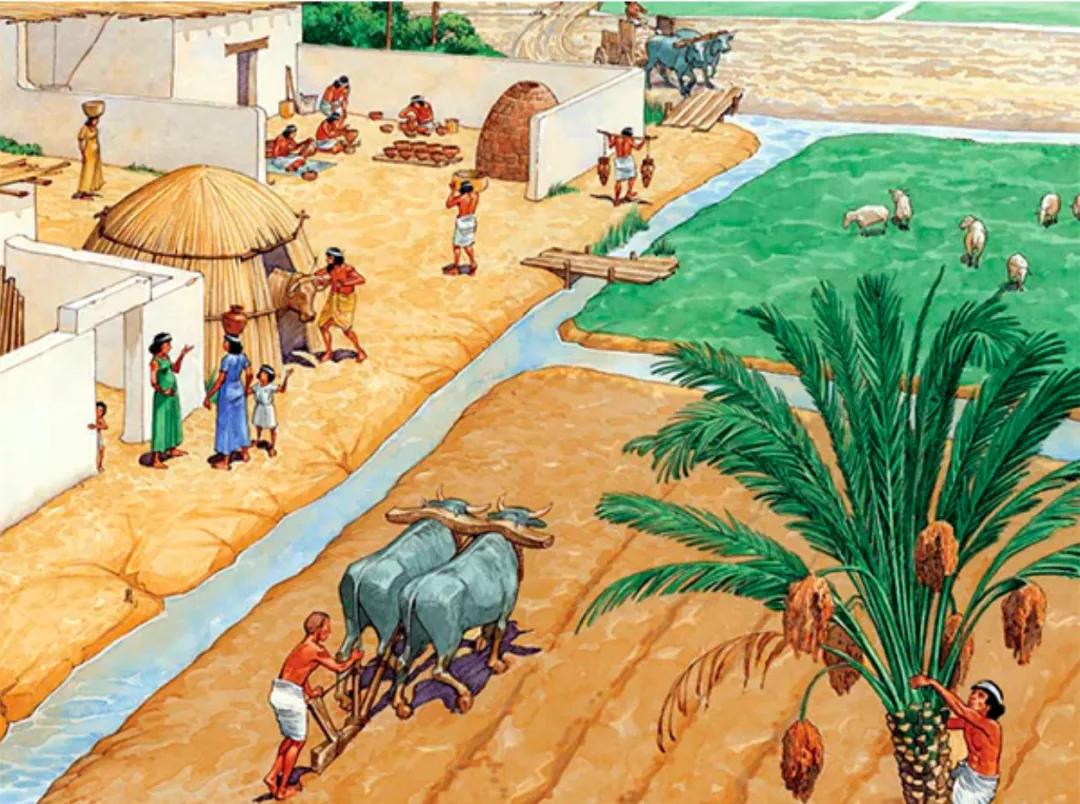
The original DAO
The First Cities Emerged
The newly developed collaborative capabilities led to a rapidly accelerating feedback loop: more people produced more food, producing more goods for more people. Cities became the ultimate manifestation of "the large-scale flow of vitality, power, and wealth," "breaking free from the limitations of the countryside," and representing "not just a change in space and scale, but a change in direction and purpose, manifested as a new type of organization" (Mumford).
The first cities became sources of attraction, leading to the generation of higher-density creativity and rapid technological upgrades: commerce, writing, money, law, culture. These original forms of coordination and communication would become the seeds of future technological developments that would change civilization.
Fractal Federation
The Mesopotamian plain, much of which emerged around 10,000 years ago, is also known as the "Fertile Crescent." The fractal nature of the confluence of tributaries of the Tigris and Euphrates rivers created conditions for a network of interdependent emerging cities:
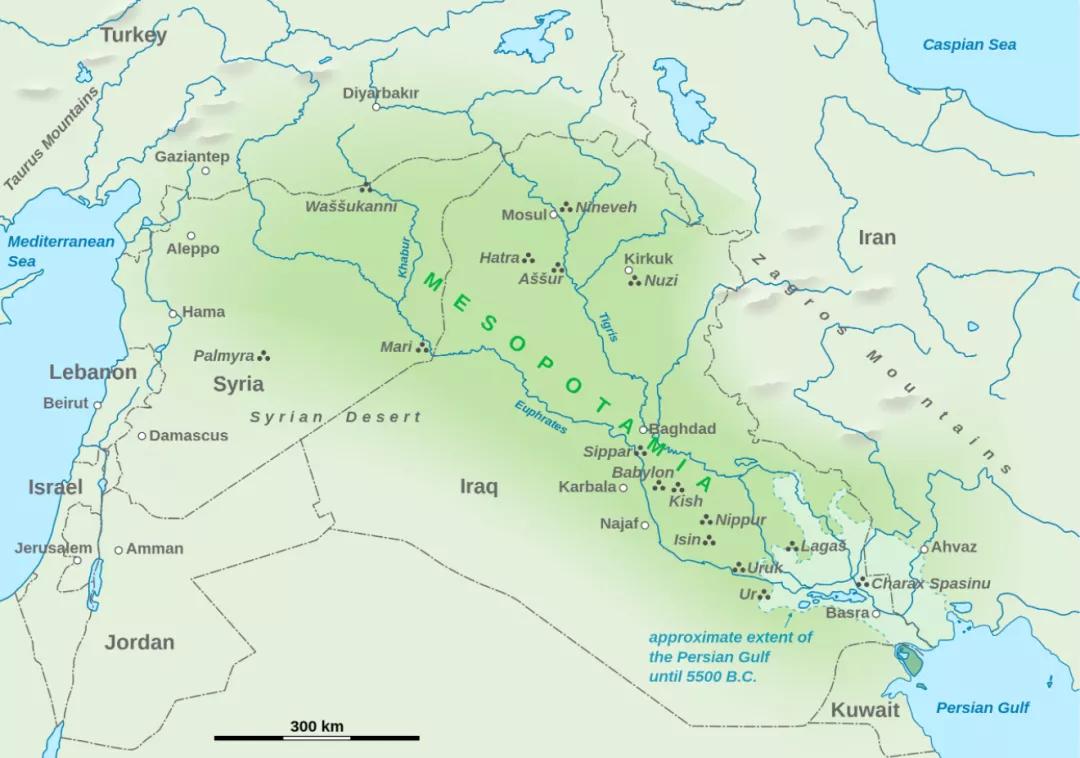
Rivers naturally form tributary networks that converge to create larger basins. Rivers flow in one direction, converging into larger watersheds, creating increasing leverage and opportunities for power concentration.
The success of the original democratic irrigation cooperatives made them victims of their own success. Where there is technological leverage, there is a practical manifestation of power. As more and more people appeared, coordinating them became increasingly difficult. At some point, a very cunning and charismatic leader, wearing a Patagonia vest from Mesopotamia, asked, "Can it scale?"
Centralized Scale
No one could provide a good answer, so the charismatic leader seized control of the means of production. He called himself king, gathered with his partners, and began to propagate, claiming that it had always been this way. Similar stories played out in five other river valleys, with slightly different costumes and titles.
These new centralized governance structures were very effective. When you claim that God has given you power and say you have the right to turn the majority into slaves, you can quickly establish something scalable, like this:
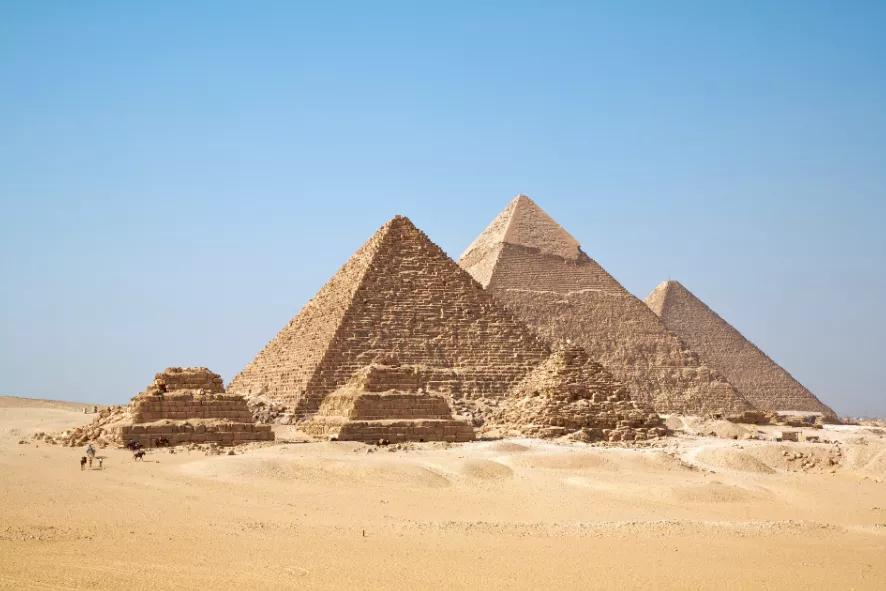
Can it scale?
However, despite the scalability of centralized governance structures, they have a fatal flaw: unlimited growth without local self-limiting feedback loops ultimately leads to collapse. The first civilizations "suffered from the vices that now have the potential to overwhelm our own civilization: aimless materialism" (Mumford).
Sumerian kings and Egyptian pharaohs eventually came to understand a difficult truth: while you can build truly magnificent things through centralized control of power, it will ultimately hollow out civilization, overconsume material resources, and collapse at the moment of being top-heavy. Then everything would become very bad for quite some time.
Classical Era: Greek City-States and the Roman Empire
The alphabet is the interconnecting part of the mind.
Eventually, someone decided to try to rebuild civilization again. Rebuilding civilization is a daunting task that requires the participation of many people, so the development of a new communication and coordination technology opened the curtain on the reconstruction of civilization.
During this period, a group of seafaring merchants known as the Phoenicians invented a new technology: the phonetic alphabet. By using interconnecting letters to form higher-order words and ideas, they greatly expanded the capacity of written language.
It was very effective in simplifying the dissemination of ideas, and today we still use a version of the alphabet adapted by the Greeks and Romans. The alphabet is not a cumbersome list of pictographs but simplifies all words into a set of standard, reconfigurable phonemes:
 The Greeks mastered this technology, added several vowels, and wrote some epics. With these new communication tools and the leisure time brought by maritime trade, the Greeks decided to gather together to play some games.
From Poetry to Democracy
Soon, collaboration evolved from poetry and games to self-governance. People spent a lot of time discussing and thinking, and decided that perhaps the whole king thing was a load of crap.
The Greeks mastered this technology, added several vowels, and wrote some epics. With these new communication tools and the leisure time brought by maritime trade, the Greeks decided to gather together to play some games.
From Poetry to Democracy
Soon, collaboration evolved from poetry and games to self-governance. People spent a lot of time discussing and thinking, and decided that perhaps the whole king thing was a load of crap.
Eventually, someone decided to do something, and thus the Greek city-states were born. Although the Greek city-states were far from perfect (with a large number of slaves), considering the limited tools available to them, those who claimed citizenship enjoyed a very effective local democracy.
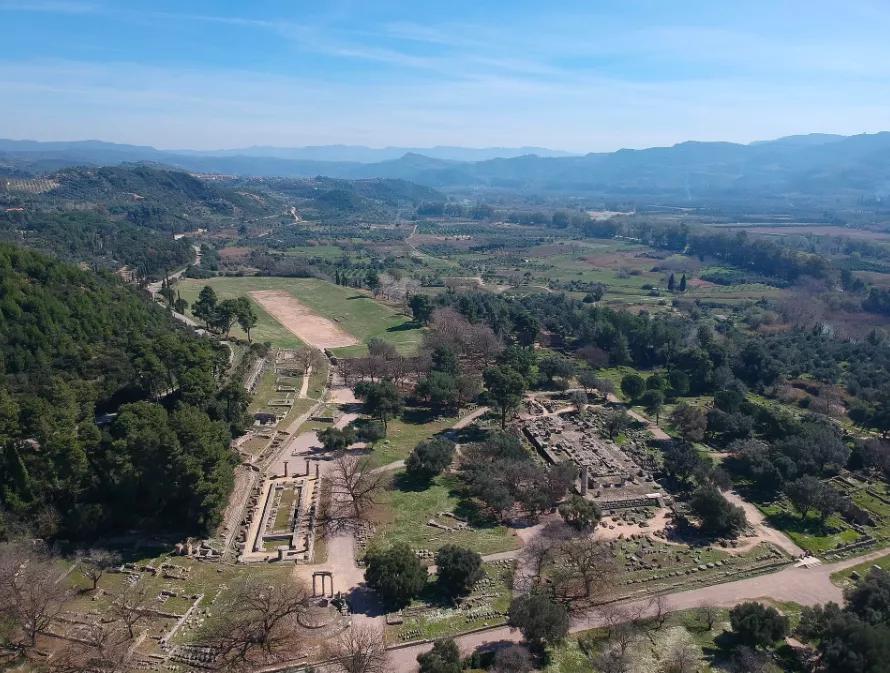
Olympia, Greece—The birthplace of the Olympics Both Plato and Aristotle believed that maintaining this pure form of self-sovereignty relied on limiting the size of the city. Plato specifically set the limit at 5,040 citizens (essentially the number of people who could realistically gather in the same space to listen to a speaker). Local democracy is effective but not scalable. The Art of Replicating Cities As popular new city-states like Delphi, Olympia, and Kos grew beyond their physical spaces, they made a radical choice: to organize and disperse to new locations. This split allowed the city-states to maintain small-scale and local governance, avoiding the problems of large-scale centralization:
As they understood and practiced, the good life depends on intimacy and a few people… When a city-state derived a colony, they seemed not to strive to expand territory or economic domination: it merely sought to reproduce conditions similar to those of the mother city. They mastered the art of replicating cities. ------ Lewis Mumford, "The City in History"
To better coordinate, these organizationally independent but culturally similar cities began to form federations. Ultimately, at least 20 different federative organizations were born, ranging from loosely shared festival gatherings to representative councils, treasuries, and courts. Some cities even airdropped dual citizenship to members of other friendly city-states.
The Rise of the Romans
All of this was fine until neighboring countries began to accumulate centralization and suppress relatively powerless individual city-states. Although the Romans initially established their own city-state alliance, they eventually succumbed to the temptation of dictatorial rule, enjoying the pleasures of plunder and pillage.
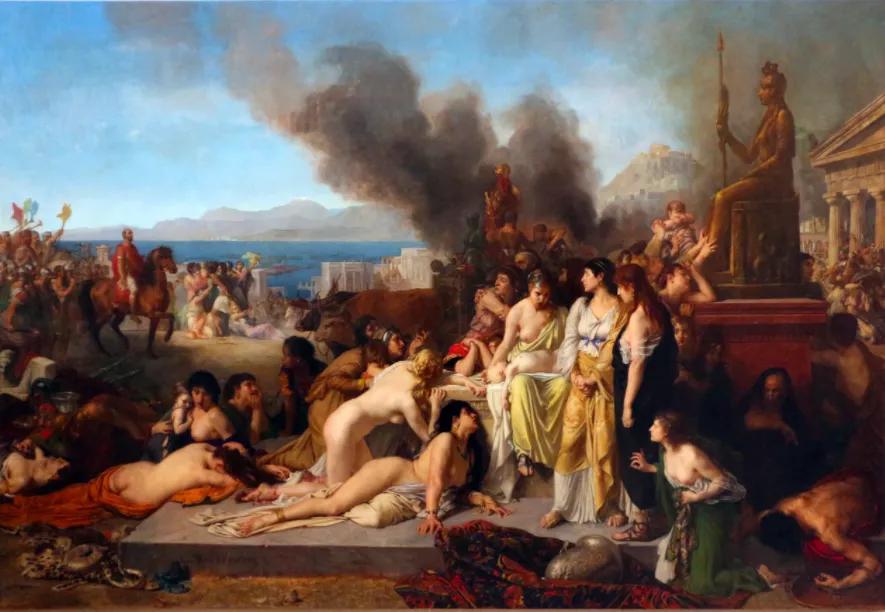
The fall of the Greek city-state of Corinth to the Roman Republic (soon to become the Roman Empire)
It is said that absolute power corrupts absolutely, and the Romans quickly proved this. The Roman Republic Empire (thanks to Julius Caesar) ransacked Greece and then boisterously thrived for 200 years, popularizing bread, promoting free love in bathhouses, and approving large-scale massacres for entertainment by the state. The historical record of populism during this period is absolutely insane. In the words of Roman poet Juvenal:
Since the people lost their right to vote and could no longer buy or sell ballots, they abandoned their obligations to the state. The people were once the authoritative source of almost everything political, military, etc.; but now they are solely focused on two things: bread and circuses.
But all good things must come to an end. Just like the collapse of centralized civilizations in ancient times, the greedy desire for material enjoyment, violence, and growth ultimately depleted available resources, hollowed out the old capital, and imploded. If you are an American, you should see the warning from historical precedents: the collapse of infrastructure and security systems began long before many realized or acknowledged the end of the empire.
Medieval Period: Market Towns and Christian Kingdoms
Markets returned power to the people.
After various barbarians and warlords sacked Rome, a foreseeable period of local fiefdoms, small dictatorships, and limited development emerged. Although many historians now refuse to use the term "European Dark Ages" to describe the early medieval period, for the vast majority who experienced the inherent violence of the system, it may not have been a good time for survival.
Beginning in the 11th century, the peak of the medieval period saw the revival of autonomy in emerging cities. It did not come from declarative political ideals but from the emergence of collaborative technologies and market realities. It was a Cambrian explosion-like process: new agricultural technologies released the ability of peasants to form medieval communes, trade and the Crusades led to increased knowledge exchange, and technologies like papermaking and printing were developed. Merchants and the towns they inhabited suddenly had collaborative and communication technologies, regaining the upper hand.
If you can't beat them, tax them.
Thousands of market towns gained significant economic rights, holding weekly gatherings for the exchange of goods and services, often protected by "market peace." Predictably, some lords and priests opposed transferring power to locally decentralized city sovereignty. But others accepted this trend, believing they could gain more from rent, tolls, and taxes through commercial growth.
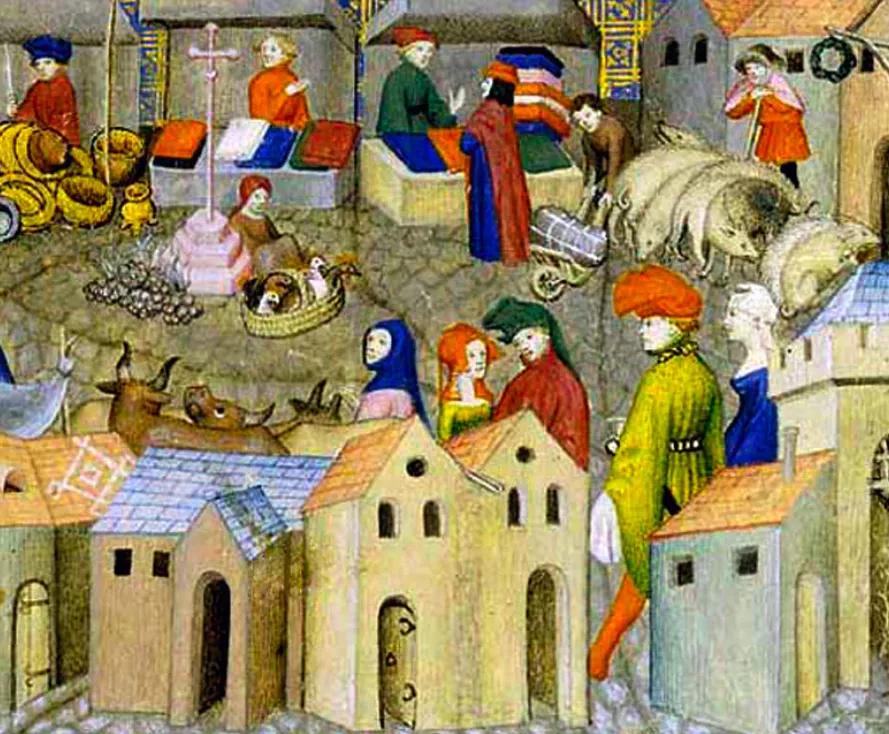
A medieval French market town
Unlike ancient Greece, which rooted self-sovereignty in deliberately promoted democratic principles, medieval local decentralized governance emerged through the comparative advantages of trade reciprocity:
Freedom, equality of enterprise, democratic participation, and autonomy were never fully realized in any medieval town; but the value of these qualities as measures may have been greater than ever before, even in Greece. ------ Lewis Mumford, "The City in History"
A New City-State Alliance
In the now-familiar historical pattern, these commercial towns and guilds began to form alliances supported by money and power. In present-day Germany, hundreds united to form the Hanseatic League, a defensive commercial alliance composed of merchant guilds. Elsewhere, as free imperial cities, they gained relative independence and participated in representative governance through imperial assemblies. At least a dozen city alliances were established, but many were too weak to achieve long-term stability.
Like the Greeks and Romans, medieval city-states encountered surviving centralized kingdoms and monarchies. Some local nobles who did not yield to the autonomous market forces had now become their own empires.
A Plague and Those Annoying Kings Come Back
With the civilizational shock of the Black Death, climate change, and famine (the collapse of metal currency further worsened the situation for the merchant class), the federative system proved too fragile to sustain. The remaining great kingdoms benefited: "In the ensuing social chaos, power fell into the hands of those who controlled armies, trade routes, and large capital accumulations" (CIH 346).
The Kingdom of England, the Kingdom of France, the Kingdom of Spain, the Ottoman Empire, the Grand Duchy of Moscow, and other primitive nation-states emerged. Centralized military despotism fought for power in bloody wars over generations. The hollowed-out Catholic Church, having burned its last sacred legitimacy, began selling everything from clergy to indulgences. Understandably, this did not sit well with the peasants. The entire region exuded the atmosphere of late centralized power.
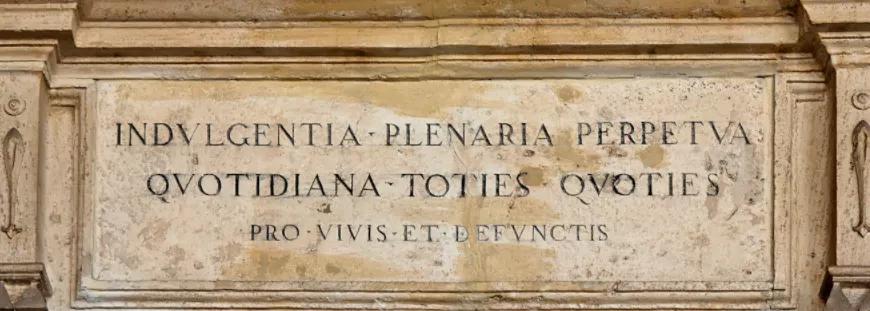
"Providing permanent daily collective exemptions for the living and the dead on every occasion."
Modern Era: American Villages and Nation-States
The printing press: interchangeable parts of letters.
A charmingly bearded fellow appeared, making printing easier. Gutenberg's printing press was a communication and collaboration technology that opened the door to another Cambrian explosion, such as the Reformation and the Renaissance.
Before long, everyone had books and maps and was filled with a yearning for adventure. For a peasant-adventurer, those annoying kings began to look less like conquerors and more like venture capitalists ready to fund a new wave of crazy startups: jump on a sailboat with a compass and see where you end up.

A small motorized sailing ship known as a caravel.
New Lands, New Decentralized Cities
These sailboats traveled around the world, quickly occupying and stealing everything in sight. Some of them came from England, plundering and stealing in a particularly favorable place they cleverly called New England. There, on land just cleared of its indigenous inhabitants, they repeated the cycle again, establishing some towns, creating local governance, and then replicating them across the country:
A democratic polity—along with the healthiest and most decent environment, as long as it remains small in scale. In every respect, this renewed medieval form not only sharply contrasts with past authoritarianism but also with all anti-democratic new Baroque order visions. The continuous development of New England towns was driven by the central social core splitting into new cells, each with its independent life, reminiscent of the early Greek model. ------ Lewis Mumford, "The City in History"
From The Federalist Papers to National Identity
Those familiar with American history know that this cycle continues: local polities unite to form a federal structure that is often too fragile to last. Over time, a more centralized form of government grows powerful and largely replaces it.
The core issue that the Founding Fathers of America struggled to resolve was establishing a sustainable organizational structure for the federation. Although the Articles of Confederation and the U.S. Constitution are masterpieces aimed at achieving this balance of power, they are failing under the heavy pressure of modern centralization. We seem to have reached the peak of centralization and late capitalism once again.
America now exhibits the self-aggrandizing dangers of late ancient Egypt, the crumbling infrastructure and massive appeasement policies of late ancient Rome, and the decline of the moral authority of the late medieval Catholic Church.
Information Age: New Technologies for Collaboration and Autonomy
Computers, the internet, and blockchain emerged in succession. Powerful new tools for collaboration and communication point the way to restoring autonomy, self-governance, and decentralized cooperation.
The internet provides us with unprecedented depth of historical knowledge and communication tools for cross-regional collaboration, allowing us to learn from the traps of the past. Computers provide technological leverage, enabling individuals to amplify their impact to unprecedented levels. And now, blockchain has solved the Byzantine generals' problem, allowing us to prove ownership and trust strangers online.
DAOs are powerful organizational outputs that combine these new collaborative tools. Historical precedents clearly indicate what will happen next: small, localized autonomous experiments are beginning to emerge. We are paving the way for replicable local towns that can start forming federated bottom-up governance networks.
However, as we have seen time and again, these federative structures are often short-lived, weak, and fragile. From the irrigation cooperatives of the Fertile Crescent to the Greek city-states, to medieval market towns, and to the settlements of New England, the promise of decentralized self-sovereignty flourished but ultimately failed.
It remains unclear whether this cycle can be broken. But we have a once-in-a-lifetime opportunity: to use the latest collaborative technologies to solve problems. Only by deeply understanding the ways decentralized organizations develop, unite, and centralize can we attempt to build a cycle that adapts better to change.
Even if history is destined to repeat itself, this cycle should not be viewed as a failure. Each rise and fall of civilization brings new, improved technologies, governance methods, and forms of prosperity, laying the groundwork for the next wave. Cycles have similarities, but compared to the past, they manifest as more complex and powerful iterations.
At the end of a cycle, civilization faces two choices: descend into chaos or move forward with new collaborative tools, rebuilding decentralized organizations from the bottom up. With our eyes wide open to the historical precedents behind us, our generation has the tools to build the next generation of local self-governance and decentralized city federations, which will form the foundation for the next era of human prosperity. Let us get to work.










